


Orin Humphries' Monocoupe makes a flight in Fun Scale at the 2018 Northwest Regionals. Twelve Scale planes were on hand. Flying Lines photo.
Fliers from all over the western United States and Canada gathered once again in Roseburg, Ore., for the West's "Big Event" in control-line competition, the Northwest Regionals.
It was the fourth year of the current series of meetings in Roseburg; attendance was up a little, weather was reasonably good, and the competition hard-fought.
The move to the Hampton Inn as host hotel -- replacing the retired Windmill Inn -- was smooth, and the CL fliers and their entourages enjoyed patronizing the many fine restaurants in the area. By the end of the event, all systems appeared go for the 48th running of the Regionals on Memorial Day Weekend of 2019.
The work of putting on the Regionals was handled by the Eugene Prop Spinners, the Umpqua Valley Modelers, Roseburg area control-line fliers and many individuals who volunteered as event directors and workers.
Sixty-three individuals showed up as contest entrants, up from the 58 at the 2017 event. The contestants accounted for 185 event entries.
Former world and national champion Paul Walker again emerged from a world-class field to capture the prestigious Regionals Expert Precision Aerobatics championship, flying the 2018 version of his electric-powered P-47 to victory over Canadian Stunt great Chris Cox and former world champion David Fitzgerald. Walker's plane also captured the Concours d' Elegance trophy for the most beautiful Stunt plane -- a repeat victory using a second version of the same design.
Field setup and teardown was again under the direction of Eugene Prop Spinners President Mike Denlis, with strong worker support from the Prop Spinners and the Umpqua Valley Modelers and Roseburg control-line fliers, along with a number of contestants on Thursday and Sunday. Events were directed by Chris Cox (aerobatics); Gene Pape (Combat); Mike Potter (Navy Carrier); Doug Powers and Richard Entwhistle (Racing); Walter Hicks (Scale); and Will Naemura (Speed). Barbara White kept the registration booth running smoothly all weekend, and Richard Entwhistle hauled the carrier deck to the site and away again.
Excellent food was provided again by the Idleyld Lodge.
The most serious crash came when Al Culver's Scale Convair COIN dived at the pilots' circle, but Al evaded the attack and the plane is repairable. There was one medical emergency, not related to modeling, that sent Paul Gibeault to the hospital, but Paul was back on the field by Sunday's trophy celebration -- and arrived just in time to have his name called in the prize drawing.
The contest offered trophy plaques for all contestants, plus huge grand championship trophies in all events. A array of high-quality merchandise prizes was given away on a "door-prize" system, so every contestant came away with a good prize, win or lose.
The trophy and merchandise prizes were made possible in part by generous donations from Regionals contestants and supporters.
Trophy sponsorships were: Combat Grand Champion, Jive Combat Team; Navy Carrier Grand Champion, Mark Schluter; Racing Grand Champion, Northwest Fireballs; Scale Grand Champion, Burt Brokaw; Speed Grand Champion, Jerry Rocha; Stunt Grand Champion, Tom Brightbill; Concours d' Elegance, Dave and Angela Gardner.
Donating merchandise prizes or cash for the purchase of prizes were: Jerry Eichten, Eugene Toy & Hobby, Paul Gibeault, Jim Green, Orin Humphries, In Memory of Wayne Spears, Jive Combat Team, John Knoppi, John Leidle, Rob Moseley, Reno Rascals, Mike Rule, the Salter family, Mark Schluter, and Paul Walker.
Elsewhere on the Flying Lines website, see updated Northwest standings, Northwest records and Regionals records.

The 2018 version of Paul Walker's P-47 captured the coveted Concours d'Elegance award for aerobatics airplanes at the 2018 Regionals. The award for the best-appearing stunt plane is chosen by a ballot of the pilots and judges. Flying Lines photo.
By Gene Pape
This is going to be a different than usual event report. I’ve already thanked the people without whose help this event wouldn’t have happened and the results are posted. What I wish to do is thank our longtime friend who has now passed from us, Dick Salter. Dick left us an assortment of circle-marking paint which resulted in a lot of learning for myself and the other competitors at this year’s Regionals.
 Being able to see the circle markings has always been a problem for me. For me, especially the center circle. At the Portland contest last month, I discovered that I, along with all of the other competitors, were having problems staying in the center circle. The AMA center circle is especially small, 3-foot radius, to keep the pilots together to help avoid flyaways caused by line tangles.
Being able to see the circle markings has always been a problem for me. For me, especially the center circle. At the Portland contest last month, I discovered that I, along with all of the other competitors, were having problems staying in the center circle. The AMA center circle is especially small, 3-foot radius, to keep the pilots together to help avoid flyaways caused by line tangles.
The multicolored center circle. Gene Pape photo.
When setting up for the Regionals this year, I reasoned that if I made a 4-foot radius center circle, the pilots could actually stay in it and the problem would be solved.
Now enter Dick Salter. After Dick’s death, his son Rich donated 12 cans of various colors of striping paint to the Regionals.
For many years I had believed that the only color paint to be used to lay out combat circles should be white. Then I saw fluorescent orange being used and decided that was the correct color to use. I then found out that color blind people couldn’t see the orange lines. The gift of multiple colors provided the solution.
I painted a heavy white line with a colored line both inside and outside of it for the center circle. I then painted white lines with different colored lines outside of them for the various different diameter outer circles for each event. Now you could easily see all of the circles from anywhere. This is going to be great, I thought.
As for the multi colored circle markings, they worked great. Throughout the entire contest there was only one instance of a competitor trying to pit on the wrong circle.
The easy-to-see center circle however, sparked a lot of controversy.
When there is only the one small center circle, flyers getting outside of it goes pretty much unnoticed. As long as the two pilots stay together, all is well. Now, with the clearly defined center circle, most of the pilots could easily stay within the circle. Then there were others who did not. Add to this that for some of us the heat of flying in a match causes adrenalin to take over from careful flying. To say that this stirred up some controversy would be a huge understatement. Add to that the fact that I as the event director was unable to keep a close enough eye on the situation caused some very heated discussions.
Controversy can be a good thing. I believe everyone who competed in combat at the Regionals this year came away better for it. My thanks to all of the highly experienced pilots who helped us all learn from this.

Most of the Combat pilots gathered for a photo. From left: Lane Puckett, Robert Smith, Pete Athans, Mike Rule, Gene Pape, John Knoppi, Don Jensen, Jeff Rein, Buzz Wilson. Dave Crabtree photo.
By Walter Hicks
The 2018 Scale event included 12 entries: Three for 1/2-A Scale, four for Fun Scale, Three for Sport Scale and two for Profile Scale.
 Two pilots returned to Scale competition with very well-documented and well-done planes: Orin Humphries and Al Culver. Orin is well know for his planes and Al is a friend of Pat Johnston. There was some stiff competition with beautiful planes and excellent documentation. John Wright flew his Corsair well in Profile Scale and Burt Brokaw flew his Mustang at a very high level with a good running .60 for power.
Two pilots returned to Scale competition with very well-documented and well-done planes: Orin Humphries and Al Culver. Orin is well know for his planes and Al is a friend of Pat Johnston. There was some stiff competition with beautiful planes and excellent documentation. John Wright flew his Corsair well in Profile Scale and Burt Brokaw flew his Mustang at a very high level with a good running .60 for power.
Some of the Scale planes awaiting their official flights. Flying Lines photo.
Bob Lewis had a very nice flying Hellcat. On an interesting note, all 1/2-A planes were multi-engine and got the bonus point for having both running during the flight.
John Wright was the grand champion with two first places and two second places. See the resuls table below for the scores and airplane information.
Tim Westcott saved the day and jumped in at the last second to help get all the pilots' paperwork in order and allow them to start flying at 10:15 a.m. Saturday. The flying continued until around 2 p.m.. All the 1/2-A planes were flown with twin engine,s which were all started and running well for the flights. This is quite an accomplishment! Orin Humphrie's 1/2-A plane had the engines quit at the end of the flight at the same time.
There was some outstanding craftsmanship this year as the pictures will show. Several pilots had their own pit crew which made things go smoothly. It appears that Scale is alive and well at the Regionals. A big thanks to Tim Westcott for jumping in at the last second and assisting me in a huge way to make things go smoothly.
By Will Naemura
A big shout-out to Mike Hazel and John Thompson for planning and mobilizing the forces to make the Northwest Regionals available for all of us to enjoy! This is not an easy task and I want them to know that their efforts are appreciated and the memories created are priceless.
 Also, a big thanks to Jim Booker and Paul Gibeault for handling the Friday action for me. I helped to set up the field on Thursday, but on Friday, I had to travel back to Portland for a business meeting. The action at the Speed circle was constant throughout Friday and Saturday. As I understand, it sounds like Friday was the busier day as most competitors choose to get officials on that day -- sans the Jets.
Also, a big thanks to Jim Booker and Paul Gibeault for handling the Friday action for me. I helped to set up the field on Thursday, but on Friday, I had to travel back to Portland for a business meeting. The action at the Speed circle was constant throughout Friday and Saturday. As I understand, it sounds like Friday was the busier day as most competitors choose to get officials on that day -- sans the Jets.
Speed planes awaiting action. Flying Lines photo.
The weather on Friday and the morning of Saturday was a bit cold for the jets to fire and stay lit. On Saturday morning, Jim Booker was eagerly checking the temperature and waiting for it to get over 64 degrees so his NW Sport Jet would fire. Finally, a fire and a test flight -- though not a record-breaking speed! Then, it’s time for an official and it went F2A on him and became irrationa. But, Jim prevailed and got official flights on his jet in both NW Sport Jet and NASS Sport Jet.
Other memorable moments include the following:
For me personally, the most memorable moment was to spend time with fellow modellers. Many of them I have known for over 40 years and they helped to shape who I am today -- (Yes, I have an excuse!). Currently living overseas in Germany, I will make my best effort to come back every year to help at the NW Regionals. As time passes, I realize how special these times are and to value the time with have together.
As we look forward to next year, let’s make a serious effort for each person to bring one new competitor to the NW Regionals and/or fly an event that we have not flown before! For me, my goal is to have 6 ea. F2A entries at next year’s event. I along with Paul (he is just now informed) will fly anyone’s F2A entry if they need help. Let’s find a way to make next years’ NW Regionals, the best contest it can be!
By Chris Cox
This was my first year as the Stunt Event Director, and I was a little nervous thinking about all that could go wrong. This is actually a good thing, as it inspired me to do as much pre-event planning as possible. These efforts paid of big time as the actual running of the event actually turned out to be quite straightforward
 To all my judges, a huge thank-you. This can be an extremely tough job, not just because you might find yourself standing in the sun for several hours, but because often times you find yourself running from one side of the circle to the other when variable winds are the rule of the day. Too Gordy and Bruce who are not nearly as mobile as you once were, you did good! To Joan, what can I say. ... Can I show this women a good time or what!
To all my judges, a huge thank-you. This can be an extremely tough job, not just because you might find yourself standing in the sun for several hours, but because often times you find yourself running from one side of the circle to the other when variable winds are the rule of the day. Too Gordy and Bruce who are not nearly as mobile as you once were, you did good! To Joan, what can I say. ... Can I show this women a good time or what!
Classic Stunt planes lined up for appearance judging on Saturday morning. Flying Lines photo.
To Mary Lou Rush and Ethan Mills, thank you so much for running scores. On Sunday morning with two stunt circles in use, it was painfully obvious to me that my feet were not going to last the day. Too my relief, Mary Lou came to me and volunteered (of all things ...) to run scores. A quick plead/request to Ethan Mills (Dave and Alice Cotton-Royer’s grandson) resulted in a no hesitation yes, he would be happy to run scores. Wow, what an outstanding you man.
To Mike Denlis, I can not express my gratitude enough for looking after much of the weigh-in process and all of the pull testing. Your reliability and assistance was invaluable.
To Barb White, you are simply amazing. Now I know who really runs the Regionals! Barb’s organizational skills are unmatched. I knew Barb was good when dealing with her at the Spring Tune-Ups in Portland, but I have to say, I had no idea she was this good. Not only that, but I think we made a pretty good team. Thanks Barb!
And finally, a big thank-you to all the participants that showed up on time and were ready to fly when it was their turn to do so. (Hmmm, has anybody seen Scott Dinger?) All my early worry proved to be totally unnecessary.

Mike Haverly's Chizler makes an official flight in Classic Stunt. Flying Lines photo.

Stunt Event Director Chris Cox conducts a pilots' meeting. Flying Lines photo.


Combat action: In the left photo, Jim Schneider (foreground) battles Gene Pape in 80mph Combat. In the right photo, Pete Athans (left) and Robert Smith duke it out. Flying Lines photos.

MO-1 Navy Carrier planes in the Carrier pits. Flying Lines photo.

Ken Bird's GEO XL makes a flight in Expert Precision Aerobatics. Flying Lines photo.

Four stopwatches employed in timing a Speed flight. Flying Lines photo.

Dennis Nunes likes similarly decorated planes for the different Stunt events. Flying Lines photo.

There are lots of classes in the Speed category, meaning some teams bring a big fleet. Flying Lines photo.

Dave Royer's Humongous glides in for a landing in Old-Time Stunt. Flying Lines photo.

Another plane just about to touch down; this one is Al Culver's Bonzo finishing a Scale flight. Flying Lines photo.

Combat fliers keep busy in the pits preparing their planes for 80mph Combat. Flying Lines photo

Brett Buck (left) and David Fitzgerald examine Howard Rush's Impact during appearance judging for Precision Aerobatics. Flying Lines photo.

Most of the Precision Aerobatics planes lined up for appearance judging. Flying Lines photo.

David Fitzgerald's Thunder Gazer leaves a smoke trail across a clear blue sky during Expert Precision Aerobatics. Flying Lines photo.

Profile Stunt planes lined up in the pits. Flying Lines photo.

Al Culver dodges out of the way has his DH 89 1/2-A Scale plane crashes near the pilots' circle. Al was OK but the plane was damaged. Flying Lines photo.

Another Al Culver plane, his Convair COIN, fared better. Flying Lines photo.

There are always some "swap meet" tables: This lineup of ready-to-fly planes was offered by Ken Burgar. Flying Lines photo.

Don Jensen launches a 1/2-A Combat plane for a match, while the other team is still getting the engine started. Flying Lines photo.

All business: Jerry Rocha's Northwest Sport Jet Speed plane awaits action. Flying Lines photo.
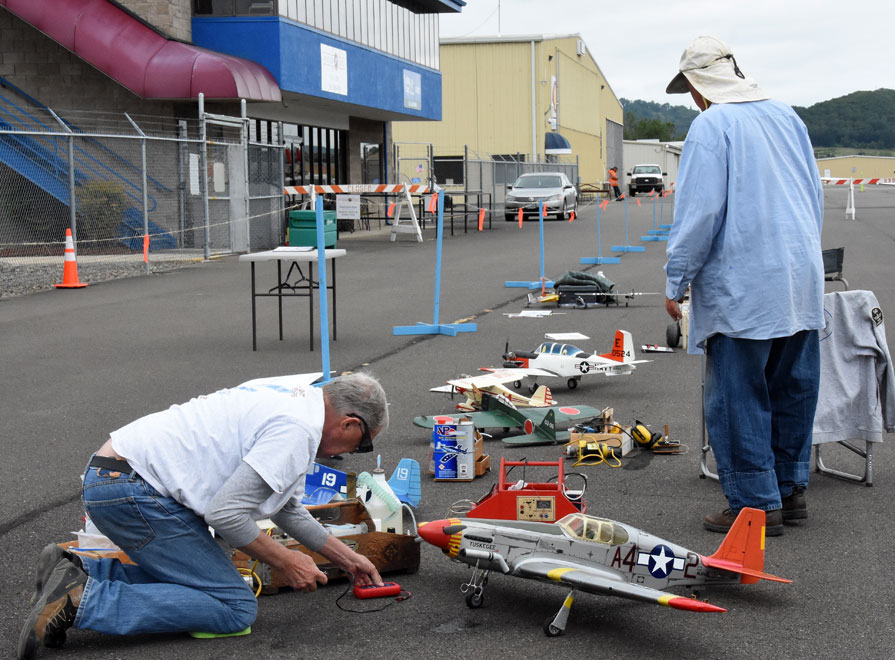
Burt Brokaw (left) and John Wright at work in the Scale pits. Flying Lines photo

Carrier planes await action. Flying Lines photos.

Speed flier Ken Burdick puts in a flight from the pylon. Flying Lines photos.

Two Combat planes make a close pass. Flying Lines photo.

Mark Schluter tunes the engine on his Navy Carrier plane. Flying Lines photo.
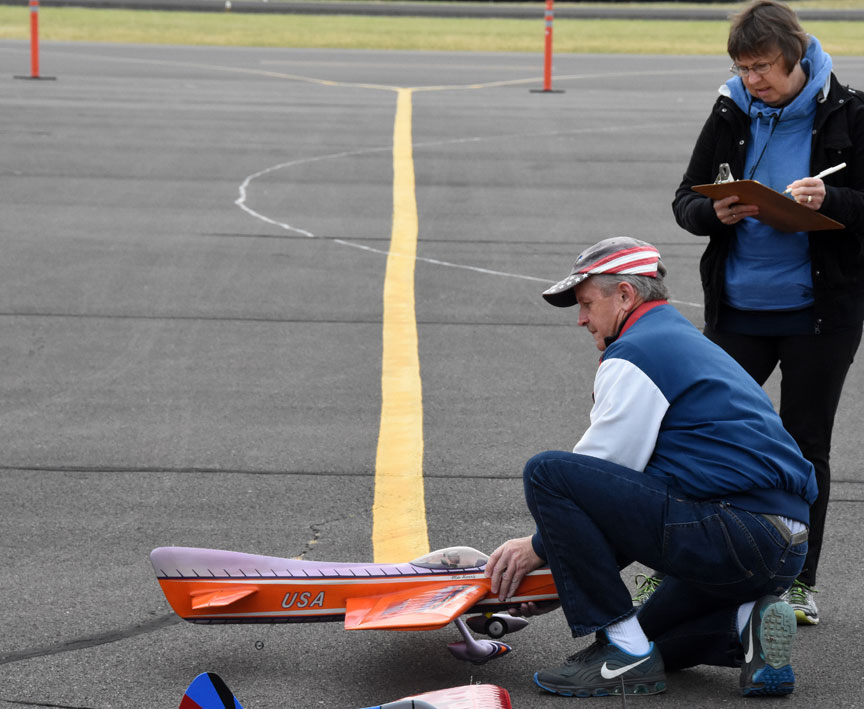
David Fitzgerald and Joan Cox examine Mike Haverly's Chizler during Classic Stunt appearance judging. Flying Lines photo.
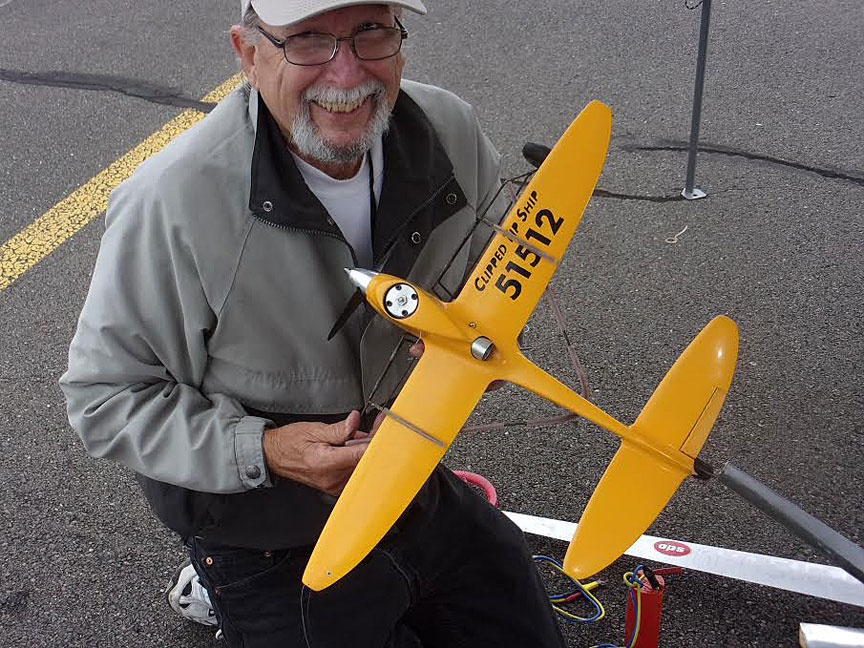
Howard Doering with one of his Speed planes. Steve Lindstedt photo.

Business end of a Speed plane. Steve Lindstedt photo.

Al Culver's RC-equipped Scale control handle. Flying Lines photo.

Walter Hicks judges John Wright's Sport Scale from a distance. Flying Lines photo.

David Fitzgerald flies his Thundergazer in Expert Precision Aerobatics. Flying Lines photo.

Scott Dinger launches Jim Rhoades' Apteryx for the winning Classic Stunt flight. Flying Lines photo.


Left: Gordan Delaney's Bellanca Right: Mark Wasnick's Tempest. Flying Lines photos.
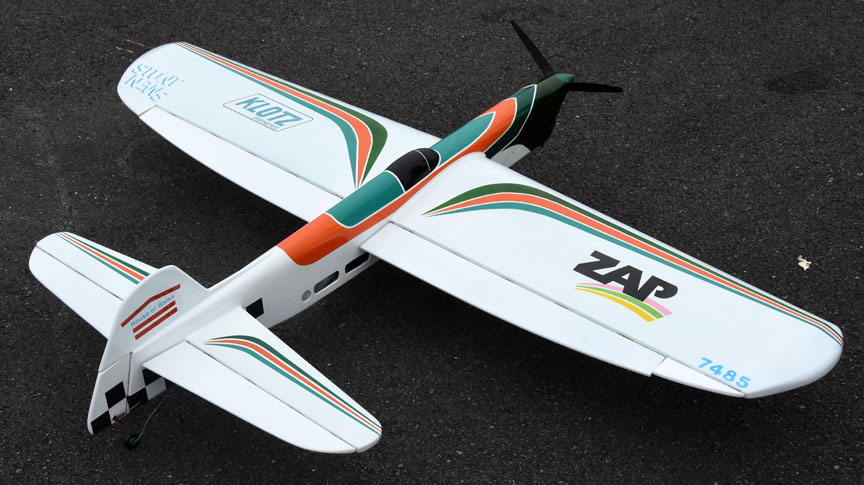
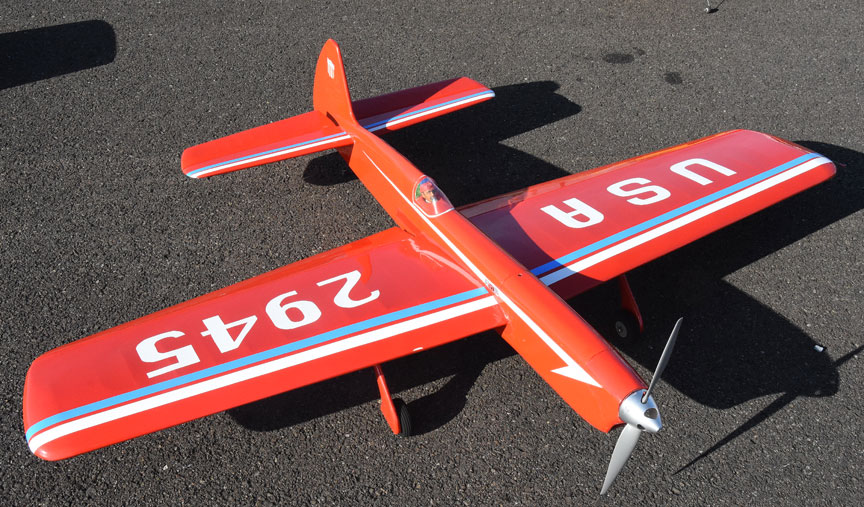
Two Classics: Scott Dinger's on left and Lanny Shorts' on right. Flying Lines photos.


Left: Al Culver's Bonzo for Sport Scale. Right: Jim Aron's Ringmaster for Old-Time Stunt. Flying Lines photos.


Left: Brett Buck's Infinity. Right: Jim Aron's Systrema. Flying Lines photos.
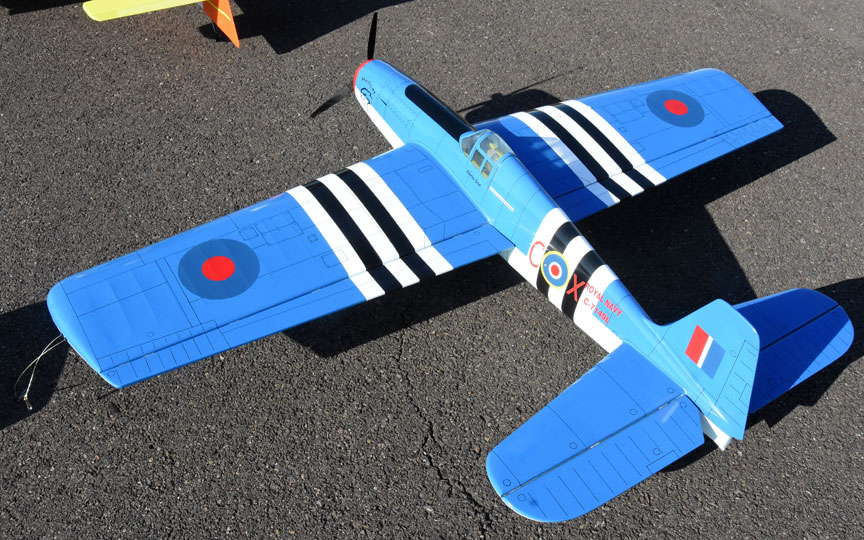
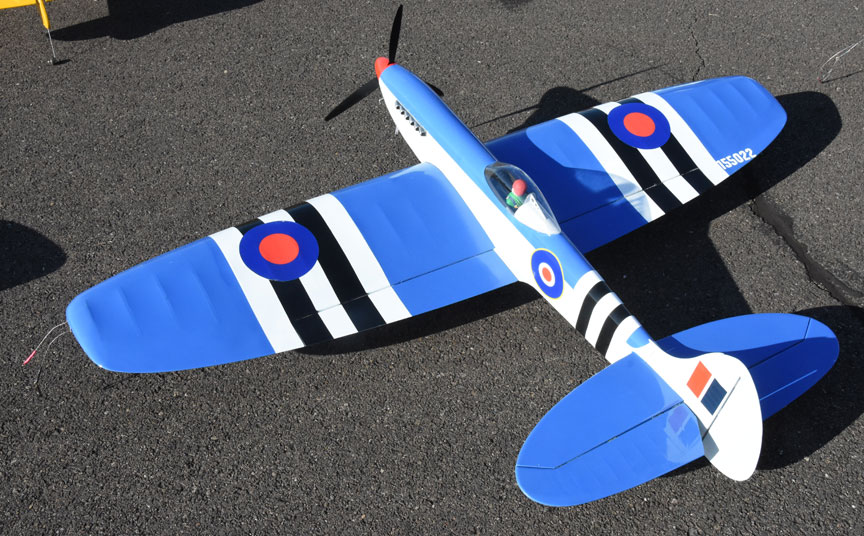
Almost a matched set: Left: Chris Cox's Hellcat Right: Walter Hicks' Spitfire. Flying Lines photos.


Left: Mark Schluter's Vector 40. Right: Jim Rhoades' Apteryx. Flying Lines photos


Left: Tom Brightbill's O'Toole Tucker. Right: Pat Johnston's Shark. Flying Lines photos.
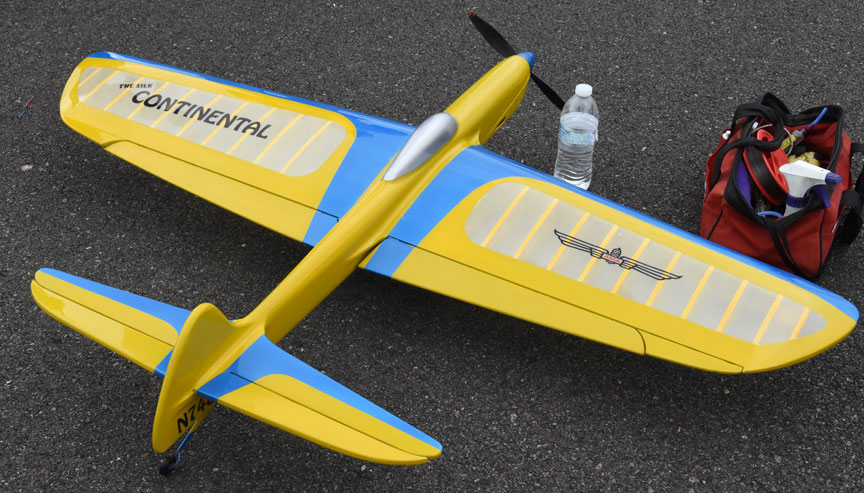

Two Classics: At left, Scott Dinger's; at right, John Leidle's Flying Lines photos.


Left: Mike Haverly's Fifth Element. Right: Marshall Palmer's Skipjack. Flying Lines photos.


Left: Mark Wasnick's Thundergazer. Right: Dave Royer's Magnum. Flying Lines photos.


Left: Randy Powell's Slider. Right: Alan Resinger's Rare Bear. Flying Lines photos.

Pat Johnston's Bearcat 617 electric. Flying Lines photo.
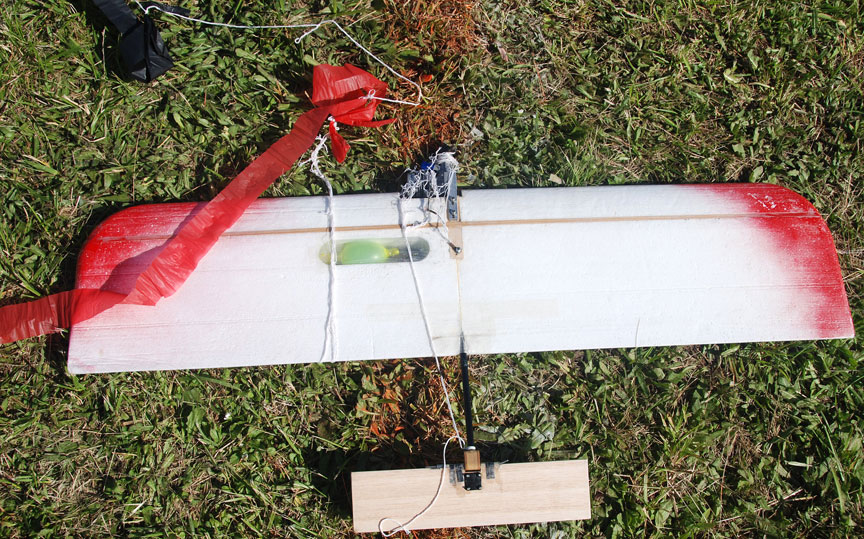
Combat fliers and officials will tell you that, no matter how many times you participate in the event, you will always see something you have not seen before. This is Gene Pape's 80mph Combat plane after a match. See the shredded string in all around the engine? That came from Gene's opponent's streamer -- a kill. But if you look closely, you will see that Gene's own streamer also is wound up in the prop. Nobody is quite sure how it happened. Gene Pape photo.
Results of this contest are included in the Northwest Competition Standings.
This page was upated June 4, 2018